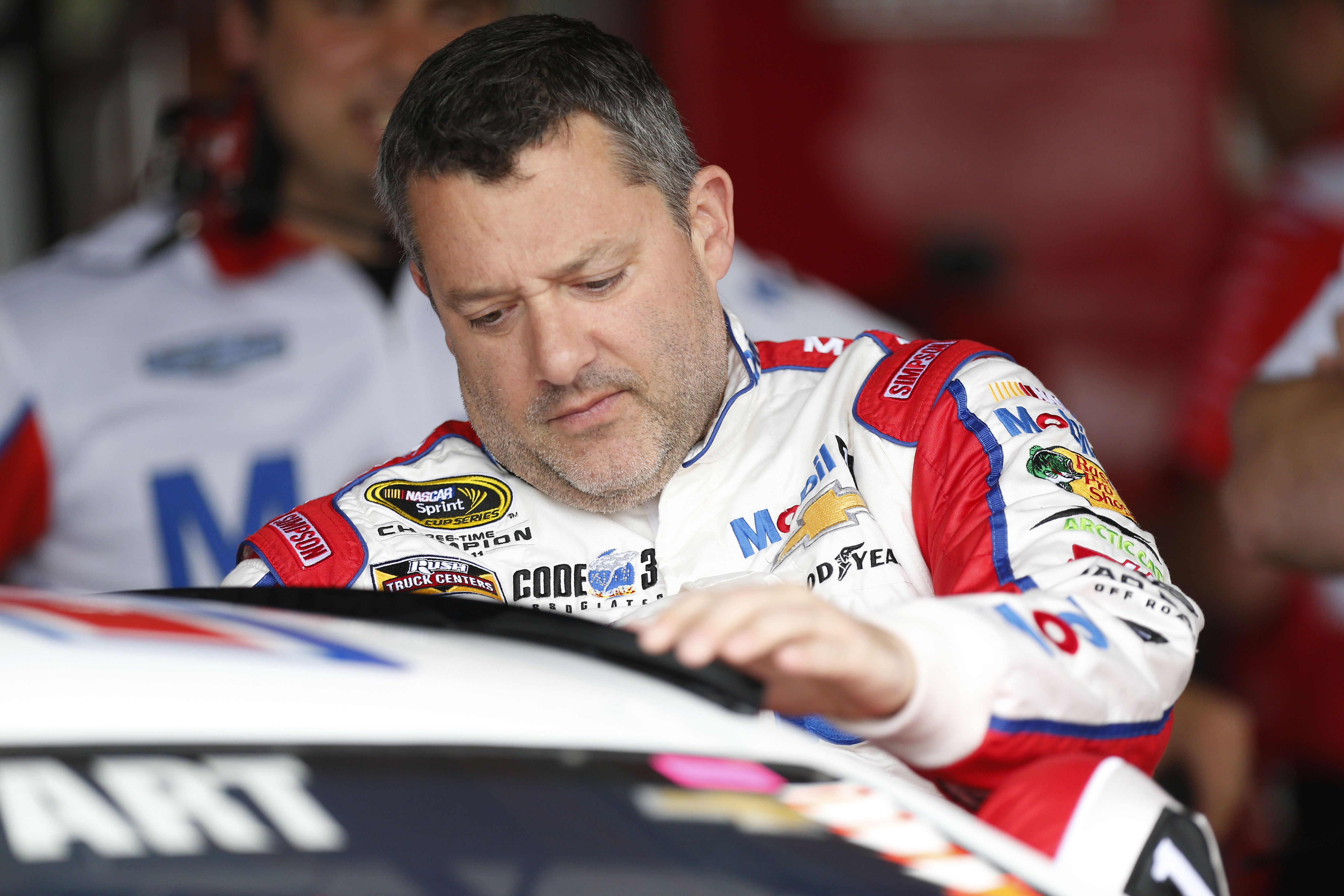![NASCAR: Toyota Owners 400-Practice [image : 83654846]](http://www.gannett-cdn.com/media/2016/04/28/USATODAY/USATODAY/635974481419620447-stewart-dega.jpg)
TALLADEGA, Ala. — Prudence has not been a hallmark of Tony Stewart’s decision-making process. Maybe three Sprint Cup titles, another in IndyCar and the USAC Triple Crown would have been beyond reach if it had been. He is extremely passionate both personally and professionally, which is why he has cultivated such loyalty and such visceral opposition in both realms at different periods of his career.
He’s loaned money, provided air transportation for acquaintances or strangers in need, saved iconic dirt tracks by purchasing them and stewarding them into the future.
He’s been bombastic and combative with competitors, media and fans, and incurred the wrath of NASCAR last week — in the form of $35,000 fine — for criticizing the series’ policing of a lug nut policy it subsequently changed.
![Gluck: NASCAR should rescind Tony Stewart fine [oembed : 83654258] [oembed : 83654258] [oembed : 83654258] [oembed : 83654258] [oembed : 83654258] [oembed : 83654258]](/Portals/_default/Skins/PrestoLegacy/CommonCss/images/smartembed.png)
He’s broken a leg racing a sprint car in Iowa — costing him 15 Sprint Cup races in 2013 — and suffered a burst L1 fracture in his back on Jan. 31 while riding a sand car in Southern California — costing him the first eight races of this, his scheduled final season in Sprint Cup.
And so Stewart arrives at Talladega Superspeedway this weekend, one week into his comeback — he started 18th and finished 19th in a festive return Sunday at Richmond International Raceway — at a 2.66-mile behemoth of a venue where speeds mock 200 mph, mass accidents are common and tumbling race cars are a perverse and anticipated facet of the spectacle.
This does not seem prudent for someone medically cleared on April 20. Luckily for Stewart, his physicians agree. He will practice and commence the race in the No. 14 Chevrolet, then is scheduled to cede the seat early to Xfinity series regular Ty Dillon, who raced the car three times this season as a replacement. Dillon said that he would qualify the car and share practice time with Stewart on a Wednesday appearance on SiriusXM NASCAR Radio.
![James: Tony Stewart rides Sunday, fun day [oembed : 83654308] [oembed : 83654308] [oembed : 83654308] [oembed : 83654308] [oembed : 83654308] [oembed : 83654308]](/Portals/_default/Skins/PrestoLegacy/CommonCss/images/smartembed.png)
“Next week is not going to be what we really want, having to start the race and get out,” Stewart said after the Richmond finish, “but we know why we have to do it. It’s the right thing to do. It’s the smart thing to do and it’s the only way the doctors were going to let me do it in the first place. So I made them meet me in the middle and at least start the race so we can get points.”
Dillon finished 17th at Atlanta, 15th at Phoenix and 25th at Bristol splitting replacement duties with Brian Vickers. The 24-year-old was among a horde of well-wishers who surrounded Stewart before he climbed into the race car at Richmond.
“I hadn’t talked to him since I got cleared, and he’s excited and understands me starting the race," Stewart said, "so hopefully we’ll get a caution early and we can get him in there and let him go run his race, but I’m excited.”
By NASCAR rules, the driver who begins a race is credited with the result of the replacement. If Dillon wins, Stewart qualifies for the Chase for the Sprint Cup if he can penetrate the top 30 in driver points.
![Fast forward: Sprint Cup storylines to watch heading into Talladega [oembed : 83654404] [oembed : 83654404] [oembed : 83654404] [oembed : 83654404] [oembed : 83654404] [oembed : 83654404]](/Portals/_default/Skins/PrestoLegacy/CommonCss/images/smartembed.png)
Replacing a driver is an infrequent practice but almost always for the purpose of preserving the title hopes of an injured driver. A mid-race driver change, under green flag conditions can be a lengthy and costly process in terms of track position.
In 2013, Denny Hamlin — in his first race since sustaining a compression fracture in his lower back at Fontana, Calif., four events earlier — gave way to Brian Vickers after 23 laps at Talladega during a caution period. His Joe Gibbs Racing crew spent a first pit stop extricating Hamlin through a roof hatch and inserting Vickers and a second servicing the No. 11 Toyota. He lost one spot in the running order.
![Denny Hamlin swaps with Brian Vickers - Aarons 499 - Talladega 2013 [oembed : 83654518] [oembed : 83654518] [oembed : 83654518] [oembed : 83654518] [oembed : 83654518] [oembed : 83654518]](/Portals/_default/Skins/PrestoLegacy/CommonCss/images/smartembed.png)
Erik Jones’ assumption of the No. 11 Toyota last April at Bristol Motor Speedway was simpler because Hamlin — who complained of a neck malady — was unable to continue after a lengthy rain delay. After sustaining second-degree burns in a 2004 sports car accident, Dale Earnhardt Jr., was swapped out for Martin Truex Jr. and John Andretti at New Hampshire and Pocono, respectively.
Follow James on Twitter @brantjames


